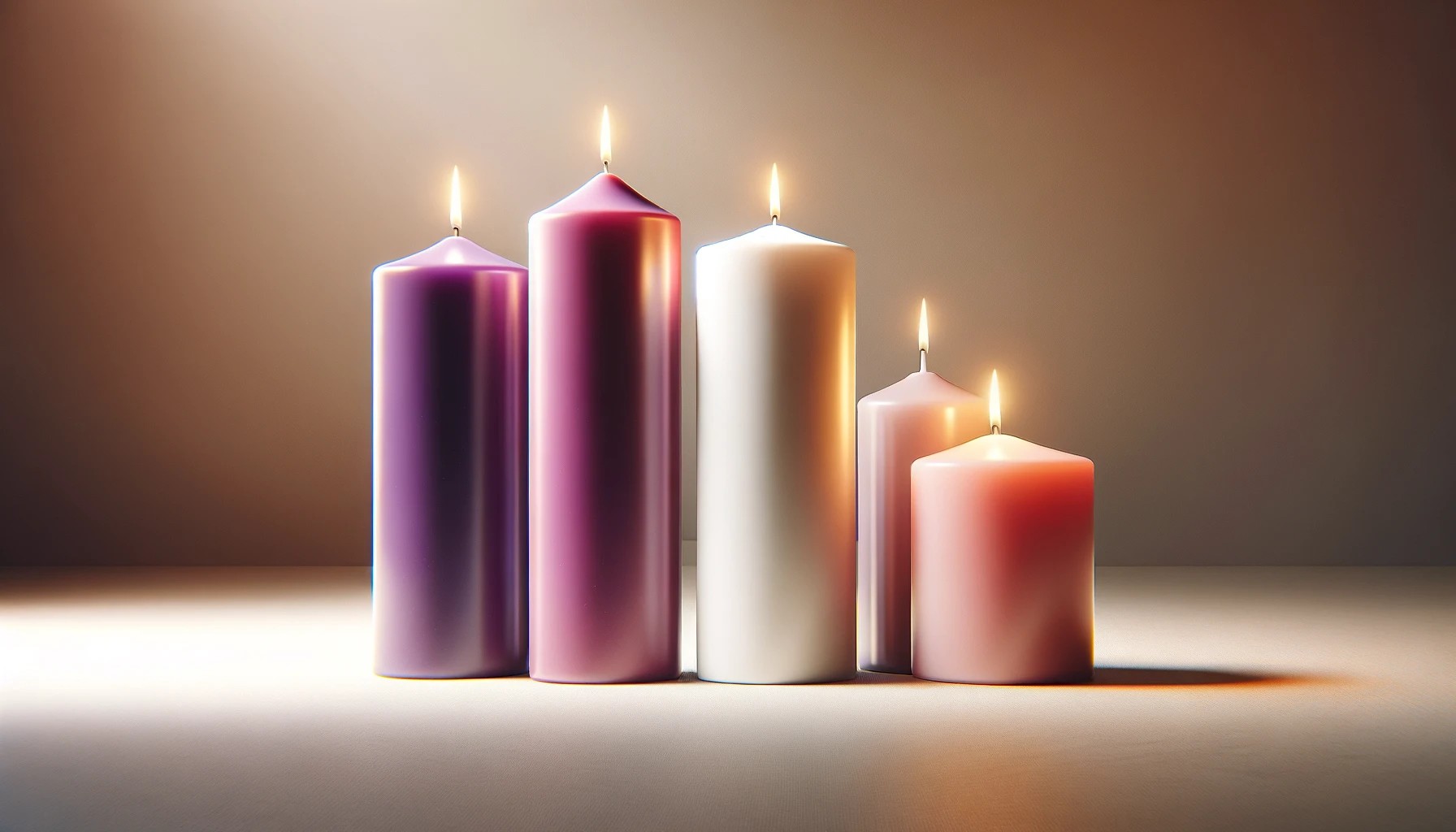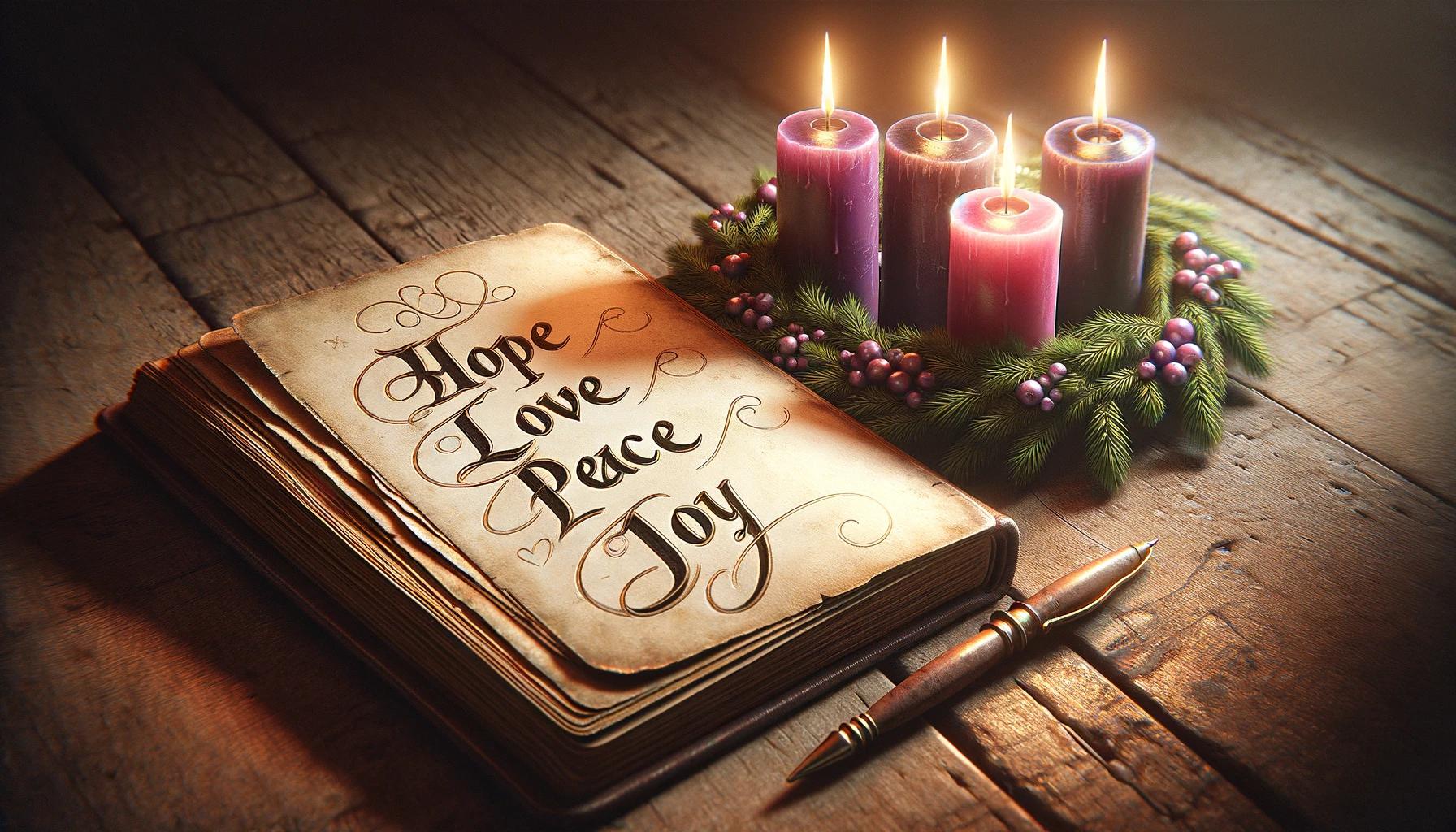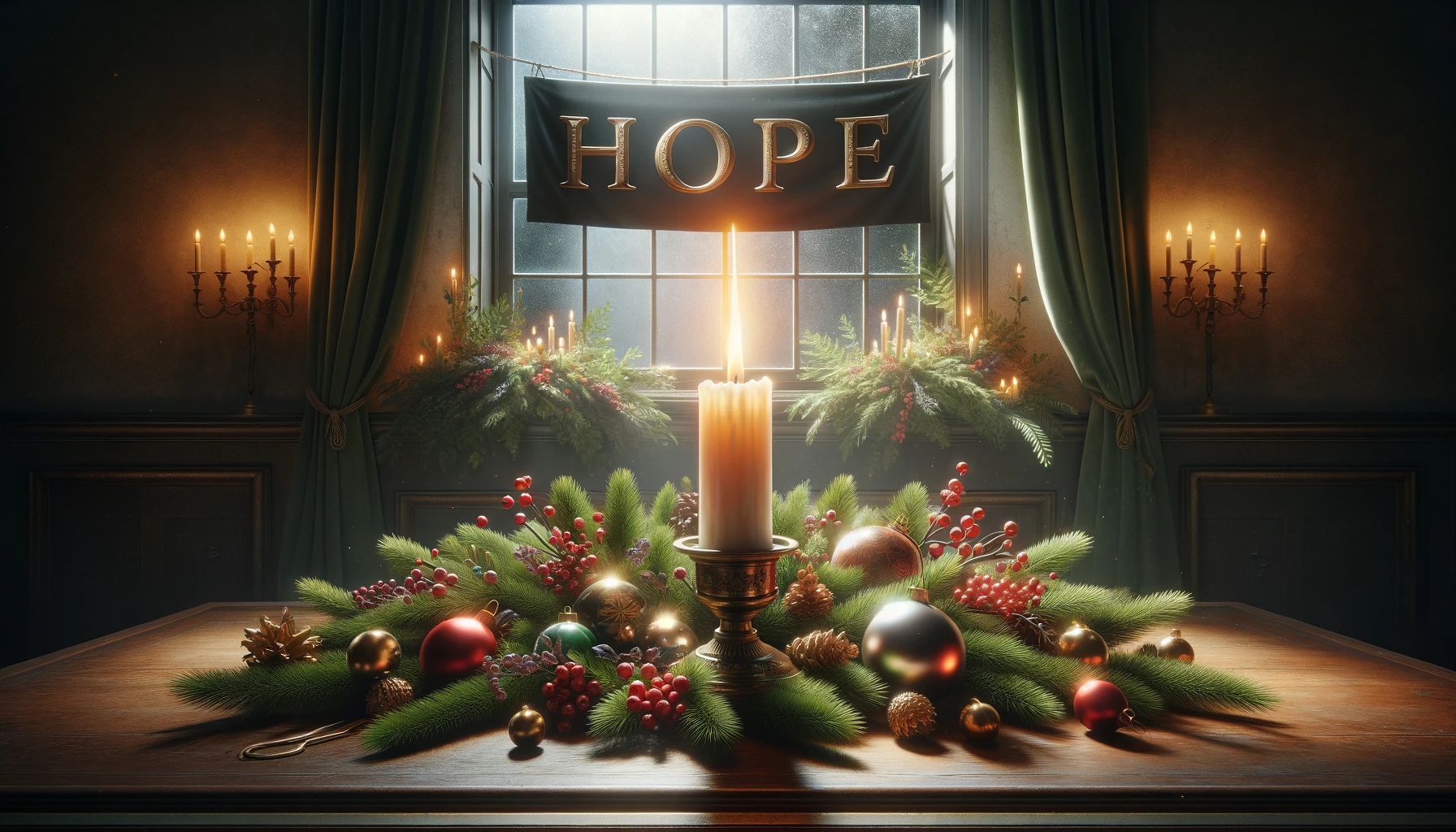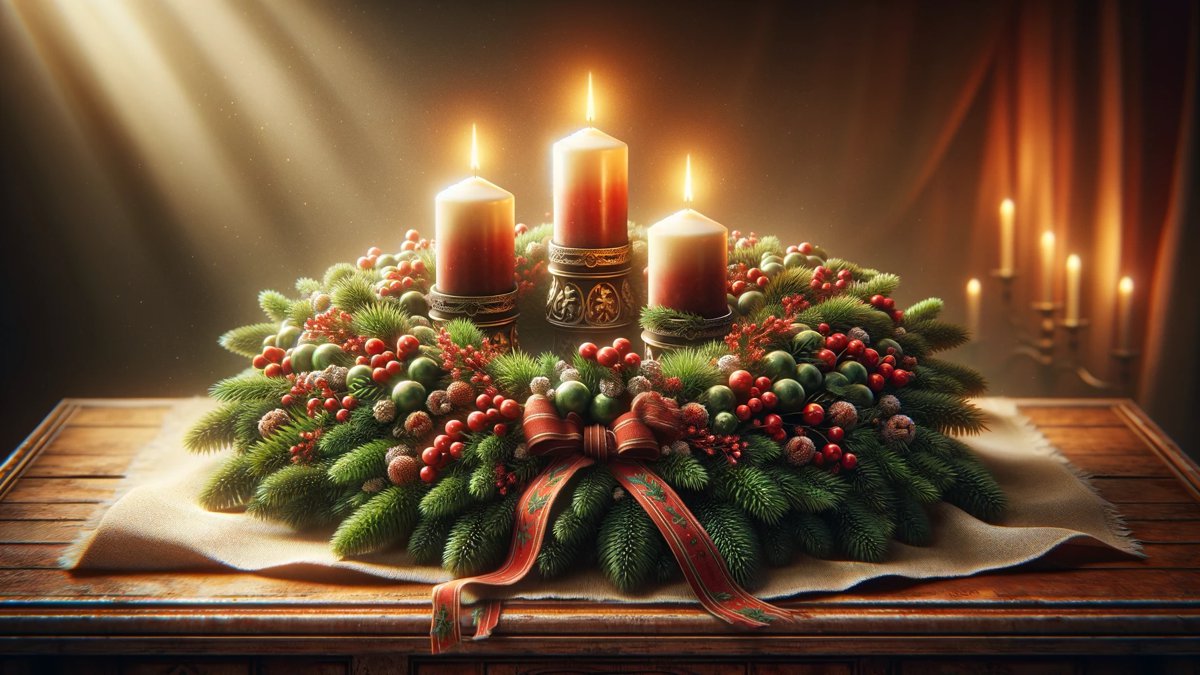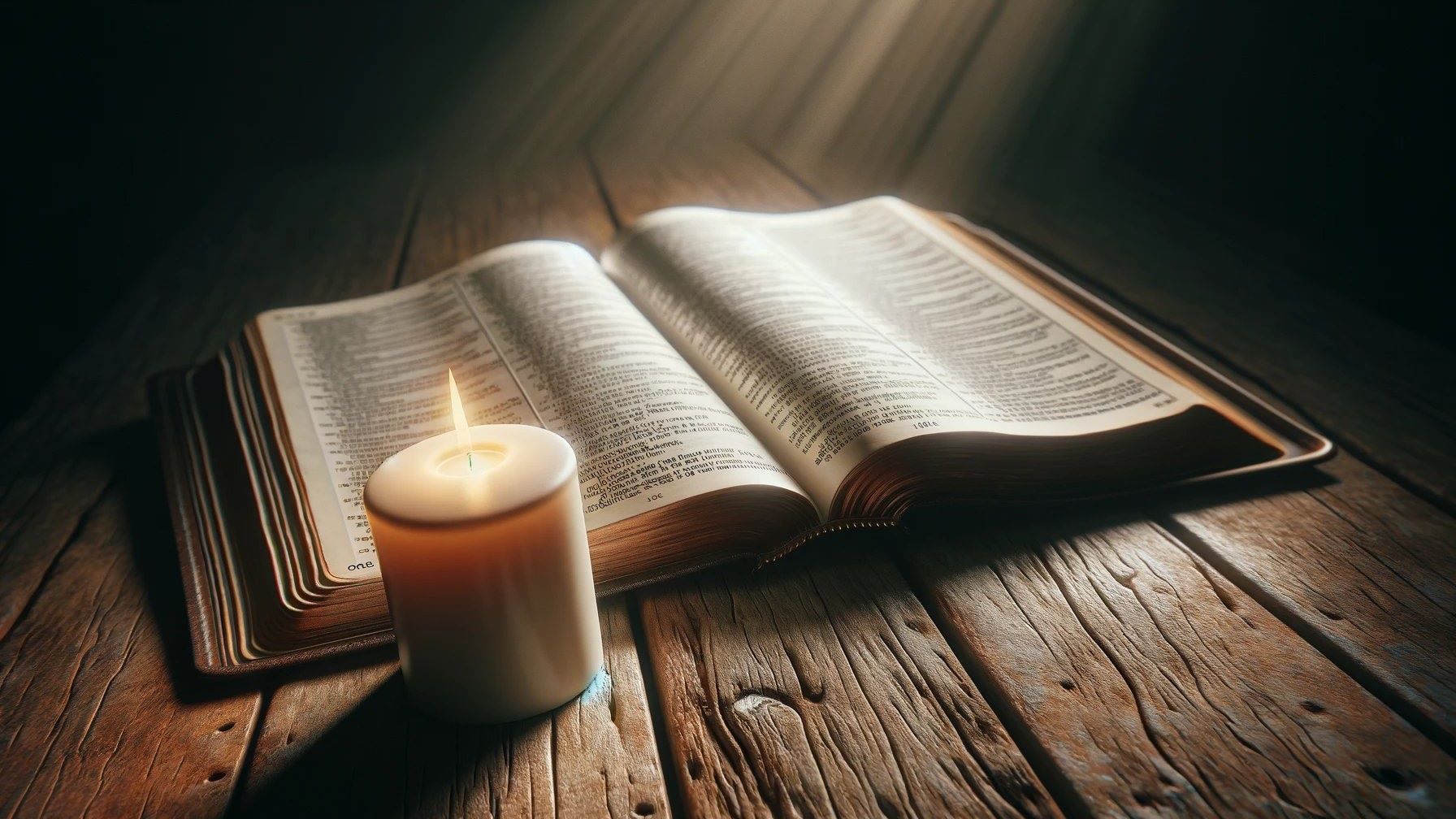Home>Special Themes>What Does The 3rd Candle Of Advent Represent


Special Themes
What Does The 3rd Candle Of Advent Represent
Published: February 12, 2024
Ericka Andersen, an editor at Christian.net, expertly merges digital strategy with content creation, focusing on faith and societal issues. Her communication skills enhance the platform's engaging narratives, fostering meaningful dialogue on belief's impact on society.
Discover the significance of the 3rd candle of Advent and its representation of joy and anticipation. Explore the special themes of Advent with our insightful guide.
(Many of the links in this article redirect to a specific reviewed product. Your purchase of these products through affiliate links helps to generate commission for Christian.net, at no extra cost. Learn more)
Table of Contents
Introduction
As the holiday season approaches, many people around the world prepare for the celebration of Advent. This period, which typically begins on the fourth Sunday before Christmas, holds significant spiritual and cultural importance for Christians. Advent is a time of anticipation, reflection, and preparation for the birth of Jesus Christ. It is marked by various traditions, including the lighting of Advent candles, each of which carries its own symbolic meaning.
The lighting of Advent candles is a cherished custom that serves as a visual representation of the spiritual journey towards Christmas. Each candle holds a unique significance, and as they are lit sequentially over the four weeks of Advent, they symbolize the increasing brightness and hope brought by the imminent arrival of Christ.
Throughout the centuries, the observance of Advent has been a source of comfort and inspiration for countless individuals and communities. It serves as a reminder of the enduring message of faith, hope, love, and joy, which are central themes of the Christmas season. Understanding the symbolism and meaning behind each aspect of Advent, including the candles, enriches the experience and deepens the spiritual connection for those who observe this tradition.
In this article, we will delve into the symbolism and significance of the third candle of Advent. By exploring its meaning, color, placement, and role in Advent traditions, we aim to provide a comprehensive understanding of this cherished symbol. Join us on this enlightening journey as we uncover the profound significance of the third Advent candle and its enduring relevance in the celebration of the holiday season.
Read more: What Is The 3rd Sunday In Advent Called
The Symbolism of Advent
Advent, derived from the Latin word "adventus," meaning "coming" or "arrival," embodies a period of profound significance in the Christian faith. It symbolizes the anticipation and preparation for the birth of Jesus Christ, the central figure of Christianity. The observance of Advent serves as a spiritual journey, guiding individuals through a time of reflection, hope, and expectation as they await the celebration of Christmas.
The symbolism of Advent is multifaceted, encompassing themes of light, hope, patience, and spiritual readiness. The tradition of Advent is rooted in the rich tapestry of Christian history and theology, drawing upon ancient customs and scriptures to convey its profound message. At its core, Advent represents the longing for the arrival of the Messiah, echoing the sentiments of ancient prophecies and the collective yearning for redemption and salvation.
Central to the symbolism of Advent is the concept of light amidst darkness. The lighting of Advent candles symbolizes the gradual illumination of the world through the coming of Christ, dispelling the shadows of despair and heralding the dawn of a new era. Each candle represents a distinct aspect of the Advent journey, from the awakening of hope to the embodiment of love and the proclamation of joy.
Furthermore, Advent serves as a reminder of the virtue of patience and the importance of spiritual preparedness. It encourages individuals to cultivate a sense of inner vigilance and readiness, akin to the wise virgins in the biblical parable, who kept their lamps burning in anticipation of the bridegroom's arrival. This symbolism underscores the significance of being spiritually attuned and receptive to the divine presence, fostering a sense of expectancy and readiness for the fulfillment of God's promises.
In essence, the symbolism of Advent encapsulates the timeless themes of faith, hope, love, and joy, resonating deeply with individuals across generations. It serves as a beacon of light in the midst of darkness, a source of comfort in times of uncertainty, and a testament to the enduring promise of God's presence among humanity. As we immerse ourselves in the symbolism of Advent, we are reminded of the profound significance of this sacred season and the transformative power of its enduring message.
The Meaning of the Third Candle
The third candle of Advent, often referred to as the "Shepherd Candle" or "Joy Candle," holds profound significance within the context of the Advent tradition. As the third candle to be lit during the progression of Advent, it represents a pivotal juncture in the spiritual journey towards Christmas. This candle embodies the theme of joy, serving as a radiant symbol of the rejoicing and exultation that permeate the season of Advent.
The symbolism of the third candle is deeply rooted in the biblical narrative and the timeless message of hope and jubilation. It draws inspiration from the shepherds who, on the night of Christ's birth, received the angelic proclamation of "good news of great joy" heralding the Savior's arrival. The shepherds, humble and steadfast in their watch over their flock, became the recipients of this celestial announcement, signaling the fulfillment of ancient prophecies and the dawn of a new era of redemption.
The third candle, therefore, serves as a poignant reminder of the joyous tidings brought by the birth of Christ. It encapsulates the jubilant proclamation of the angels and the profound significance of Christ's arrival as the embodiment of hope and salvation. The radiant glow of the joy candle illuminates the path of spiritual anticipation, infusing the Advent season with a sense of exuberance and celebration.
Moreover, the symbolism of the joy candle extends beyond the historical narrative, resonating with the universal human experience of rejoicing in moments of divine grace and fulfillment. It serves as a testament to the enduring capacity of joy to transcend circumstances and uplift the human spirit, offering solace and inspiration in the midst of life's challenges.
As the third candle is kindled during the Advent observance, its luminous flame serves as a beacon of hope and a catalyst for communal rejoicing. It invites individuals to embrace the spirit of joy, fostering a sense of gratitude, optimism, and inner jubilation as they anticipate the culmination of the Advent journey.
In essence, the meaning of the third candle of Advent encapsulates the profound significance of joy as an integral aspect of the spiritual pilgrimage towards Christmas. It embodies the timeless message of hope fulfilled, inviting individuals to partake in the jubilant anticipation of Christ's birth and the transformative power of divine joy. As the joy candle radiates its luminous glow, it beckons us to embrace the enduring message of rejoicing in the promise of redemption and the abiding presence of divine love.
The Color and Placement of the Candle
The color and placement of the third candle of Advent hold profound symbolic significance, enriching the visual tapestry of this cherished tradition. Traditionally, the third candle is adorned with a vibrant hue, often rose or pink in color, distinguishing it from the preceding purple candles. This distinctive color serves as a visual representation of the theme of joy, infusing the Advent observance with a radiant and celebratory ambiance.
The choice of rose or pink for the third candle is deeply rooted in the symbolism of the Advent season. It serves as a visual reminder of the impending joy and rejoicing that permeate the spiritual journey towards Christmas. The warm and luminous hue of the joy candle evokes a sense of optimism, exuberance, and anticipation, signaling a shift towards the culmination of the Advent season. As the third candle is kindled, its distinctive color serves as a beacon of hope, inviting individuals to embrace the spirit of joy and inner jubilation.
In addition to its vibrant color, the placement of the third candle within the Advent wreath holds profound significance. Positioned amidst the two preceding purple candles, the joy candle occupies a central place of prominence, symbolizing the pivotal role of joy in the Advent narrative. Its placement signifies a moment of transition and anticipation, marking the halfway point in the Advent journey and heralding the imminent arrival of Christmas.
The visual arrangement of the joy candle within the Advent wreath serves as a poignant reminder of the themes it embodies. As the rose or pink candle stands in contrast to the surrounding purple candles, it conveys a sense of joyful anticipation and spiritual exultation. Its placement within the wreath underscores the transformative nature of the Advent season, as the progression towards Christmas is marked by an increasing sense of hope, joy, and anticipation.
Furthermore, the visual interplay of colors within the Advent wreath serves to deepen the symbolic resonance of the joy candle. The harmonious blending of purple and rose hues reflects the seamless transition from a season of introspection and penitence to one of joyful expectation and celebration. This visual narrative mirrors the spiritual journey of Advent, guiding individuals from a posture of solemn reflection to one of exuberant anticipation as they prepare to welcome the birth of Christ.
In essence, the color and placement of the third candle of Advent serve as visual emblems of the joy and anticipation that define this sacred season. Through its distinctive hue and central position within the Advent wreath, the joy candle invites individuals to embrace the transformative power of joy and rejoice in the promise of Christ's imminent arrival. As the luminous glow of the joy candle illuminates the path towards Christmas, it serves as a radiant symbol of hope, exultation, and spiritual renewal.
The Importance of the Third Candle in Advent Traditions
The third candle of Advent holds profound significance within the tapestry of Advent traditions, embodying the enduring themes of joy, anticipation, and spiritual renewal. As the midpoint in the progression of Advent, the kindling of the joy candle marks a pivotal juncture in the spiritual journey towards Christmas, infusing the observance with a sense of exuberance and celebration.
The importance of the third candle is underscored by its role in illuminating the path of spiritual anticipation and rejoicing. As the joy candle is lit, its luminous glow serves as a beacon of hope, inviting individuals to embrace the transformative power of joy and inner jubilation. This radiant symbol of joy resonates deeply with the collective human experience, transcending cultural and religious boundaries to evoke a sense of optimism and gratitude.
Furthermore, the joy candle serves as a testament to the enduring message of hope fulfilled, inviting individuals to partake in the jubilant anticipation of Christ's birth and the transformative power of divine joy. Its radiant presence within the Advent observance fosters a communal spirit of rejoicing, uniting individuals in a shared celebration of the imminent arrival of Christmas.
The significance of the third candle is further accentuated by its distinctive color and placement within the Advent wreath. The rose or pink hue of the joy candle, set amidst the surrounding purple candles, serves as a visual reminder of the impending joy and rejoicing that permeate the spiritual journey towards Christmas. Its central position within the Advent wreath symbolizes the pivotal role of joy in the Advent narrative, marking a moment of transition and anticipation as the season progresses towards its culmination.
Moreover, the joy candle embodies the timeless message of hope and jubilation, drawing inspiration from the biblical narrative and the celestial proclamation of "good news of great joy" heralding the Savior's arrival. Its radiant glow serves as a catalyst for communal rejoicing, inviting individuals to embrace the spirit of joy and inner jubilation as they anticipate the fulfillment of the Advent journey.
In essence, the importance of the third candle in Advent traditions lies in its capacity to infuse the observance with a sense of exuberance, optimism, and spiritual renewal. As the joy candle radiates its luminous glow, it beckons individuals to embrace the enduring message of rejoicing in the promise of redemption and the abiding presence of divine love, enriching the Advent experience with its profound significance.
Read more: What Does Advent Candles Represent
Conclusion
In conclusion, the symbolism and significance of the third candle of Advent, also known as the "Shepherd Candle" or "Joy Candle," encapsulate the profound essence of the Advent season. As the midpoint in the progression of Advent, the third candle heralds a moment of transition and anticipation, marking the halfway point in the spiritual journey towards Christmas. Its radiant glow serves as a beacon of hope, inviting individuals to embrace the transformative power of joy and inner jubilation.
The symbolism of the joy candle is deeply rooted in the biblical narrative, drawing inspiration from the shepherds who received the angelic proclamation of "good news of great joy" heralding the Savior's arrival. This timeless message of hope and jubilation resonates with the universal human experience, transcending cultural and religious boundaries to evoke a sense of optimism and gratitude. The joy candle serves as a visual reminder of the impending joy and rejoicing that permeate the spiritual journey towards Christmas, infusing the Advent observance with a radiant and celebratory ambiance.
Furthermore, the distinctive color and placement of the joy candle within the Advent wreath deepen its symbolic resonance, reflecting the seamless transition from a season of introspection and penitence to one of joyful expectation and celebration. The harmonious blending of purple and rose hues mirrors the spiritual journey of Advent, guiding individuals from a posture of solemn reflection to one of exuberant anticipation as they prepare to welcome the birth of Christ.
The importance of the third candle in Advent traditions lies in its capacity to infuse the observance with a sense of exuberance, optimism, and spiritual renewal. As the joy candle radiates its luminous glow, it beckons individuals to embrace the enduring message of rejoicing in the promise of redemption and the abiding presence of divine love, enriching the Advent experience with its profound significance.
In essence, the third candle of Advent embodies the timeless themes of joy, anticipation, and spiritual renewal, inviting individuals to partake in the jubilant anticipation of Christ's birth and the transformative power of divine joy. As we immerse ourselves in the symbolism and significance of the joy candle, we are reminded of the enduring message of hope fulfilled, inviting us to rejoice in the promise of redemption and the abiding presence of divine love.


